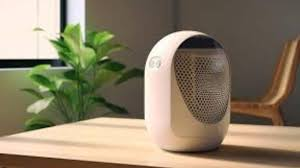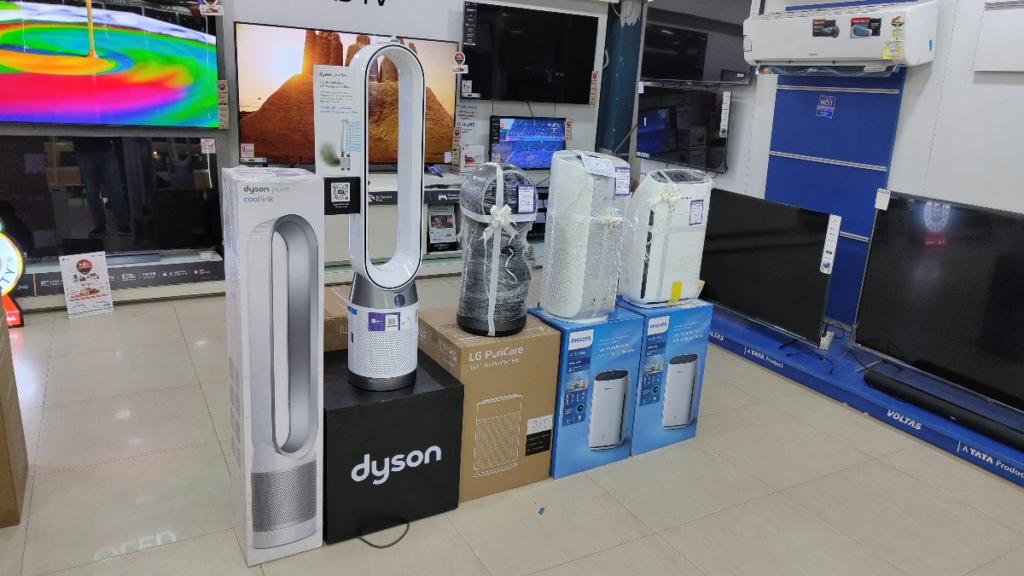As city skies grow hazier and air quality worsens, people are taking action to protect their health. In urban areas around the world, concerns about pollution are fueling a surge in demand for HEPA air purifiers. These devices, known for their ability to trap harmful particles, are becoming a must-have for households and offices in cities grappling with pollution spikes. From smog-filled streets in Asia to traffic-heavy urban centers in the West, the rise in air purifier sales reflects growing awareness of the health risks posed by poor air quality.

The Air Quality Crisis in Urban Areas
Air pollution has become a pressing issue in cities worldwide. According to the World Health Organization, air pollution is linked to millions of premature deaths each year, with urban areas bearing the brunt of this crisis. Fine particulate matter, known as PM2.5, along with volatile organic compounds and allergens, can penetrate deep into the lungs, causing respiratory issues, heart disease, and even cancer. In cities like Beijing, Delhi, and Los Angeles, pollution spikes—often driven by vehicle emissions, industrial activity, and seasonal factors like wildfires—have made clean air a precious commodity.
Urban residents are spending more time indoors, where air quality can be just as bad, if not worse, than outside. Cooking, cleaning, and even burning candles can release harmful particles into the air. When outdoor pollution seeps into homes through open windows or poor ventilation, the indoor environment becomes a health hazard. This reality is pushing people to seek solutions, and HEPA air purifiers are emerging as a popular choice.

Why HEPA Air Purifiers Are in Demand
HEPA, which stands for High-Efficiency Particulate Air, is a filtration technology that captures at least 99.97% of particles as small as 0.3 microns. This includes dust, pollen, pet dander, and even some bacteria and viruses. Unlike other air purifiers that may produce harmful byproducts like ozone, HEPA filters use mechanical filtration, making them a safe and reliable option for improving indoor air quality.
The effectiveness of HEPA purifiers is a key reason for their growing popularity. Studies have shown they can reduce indoor PM2.5 levels by up to 68% in homes, especially in areas with high outdoor pollution. For people living near Busy highways or in cities with frequent smog, these devices offer a way to breathe cleaner air. They’re also a lifeline for those with asthma, allergies, or other respiratory conditions, as they help remove triggers like pollen and mold spores.
Another factor driving sales is the increasing awareness of air quality issues. News reports, government alerts, and even smartphone apps now provide real-time updates on pollution levels, making people more conscious of the air they breathe. In countries like China and India, where air pollution is a daily concern, air purifiers have become as common as refrigerators in many homes. In the United States, states like California, which face wildfire-related pollution spikes, are seeing a similar trend.

A Booming Market for Air Purifiers
The global air purifier market is growing rapidly, with HEPA-based devices leading the charge. According to industry reports, the market was valued at over $15 billion in 2023 and is expected to grow at a compound annual growth rate of more than 7% through 2030. Asia-Pacific, particularly China and India, accounts for a significant share of this growth due to high pollution levels and rapid urbanization. However, North America and Europe are also seeing steady increases, driven by health-conscious consumers and stricter air quality regulations.
In urban areas, the demand for HEPA purifiers is particularly strong. For example, in India, sales of air purifiers have skyrocketed in cities like Delhi, where winter smog often pushes air quality to hazardous levels. Similarly, in China, air purifiers are now among the top-selling home appliances, with sales rising from 112 million units in 2011 to nearly a billion by 2017. In the U.S., states with high pollution or wildfire risks, like California and Oregon, are reporting strong demand for portable HEPA purifiers.
Manufacturers are responding to this demand with innovative products. Many HEPA purifiers now come with smart features, such as air quality sensors, auto modes, and app connectivity, allowing users to monitor and control their devices remotely. Brands like Dyson, Coway, and Blueair are introducing models with longer-lasting filters and energy-efficient designs, appealing to eco-conscious buyers. Some purifiers also combine HEPA filters with activated carbon layers to tackle odors and gaseous pollutants, making them even more versatile.
Health Benefits and Real-World Impact
The health benefits of HEPA air purifiers are well-documented. Research shows they can reduce indoor concentrations of harmful particles, leading to improvements in respiratory and cardiovascular health. In one study conducted in Beijing, using HEPA purifiers for just two weeks lowered PM2.5 levels in homes by more than half, while also reducing inflammation in seniors. Similar studies in Shanghai found that HEPA filtration improved airway mechanics and reduced the risk of blood clots in young adults.
For people with allergies or asthma, HEPA purifiers can be life-changing. By removing allergens like pollen and pet dander, these devices help reduce symptoms like sneezing, wheezing, and itchy eyes. In homes near highways, where traffic-related pollution is a major issue, HEPA purifiers have been shown to cut exposure to black carbon and other harmful aerosols. This is especially important for children, who are more vulnerable to the effects of air pollution.
Beyond health, HEPA purifiers offer peace of mind. Knowing that the air in your home is cleaner can reduce stress, especially during pollution spikes when outdoor air feels unsafe. For parents, remote workers, and anyone spending long hours indoors, this sense of control over their environment is invaluable.
Challenges and Considerations
While HEPA air purifiers are highly effective, they’re not a cure-all. They don’t remove gaseous pollutants like volatile organic compounds or nitrogen dioxide unless paired with additional filters, such as activated carbon. Regular maintenance is also crucial—filters need to be replaced every 6 to 12 months to stay effective, and neglecting this can reduce performance or even release trapped pollutants back into the air. Replacement filters can be costly, which may deter some buyers.
Another challenge is the environmental impact. Used HEPA filters are often non-biodegradable and end up in landfills, contributing to waste. Some companies are exploring sustainable alternatives, like microalgae-based purifiers, as mentioned in recent environmental discussions, which capture pollutants without generating waste. However, these technologies are still in their early stages and not yet widely available.
Consumers also face the challenge of choosing the right purifier. With so many brands and models on the market, it’s easy to be misled by terms like “HEPA-like” or “99% HEPA,” which don’t meet the true HEPA standard. Experts recommend looking for purifiers with a high Clean Air Delivery Rate (CADR) and certifications from organizations like the Association of Home Appliance Manufacturers.
The Future of Air Purification
As air quality concerns continue to grow, the demand for HEPA air purifiers is likely to keep rising. Governments and organizations are stepping up efforts to address pollution, but individual actions—like using air purifiers—will remain a key part of the solution. In the coming years, we can expect more advancements in air purification technology, from longer-lasting filters to devices that tackle both particles and gases more effectively.
For now, HEPA air purifiers are proving to be a practical and powerful tool for urban residents. They offer a way to take control of indoor air quality, protect health, and breathe easier in cities where pollution is a constant challenge. As more people recognize the importance of clean air, these devices are becoming not just a luxury, but a necessity.
Read More :- Student Loan Defaults Surge as Collections Resume, Impacting Millions





